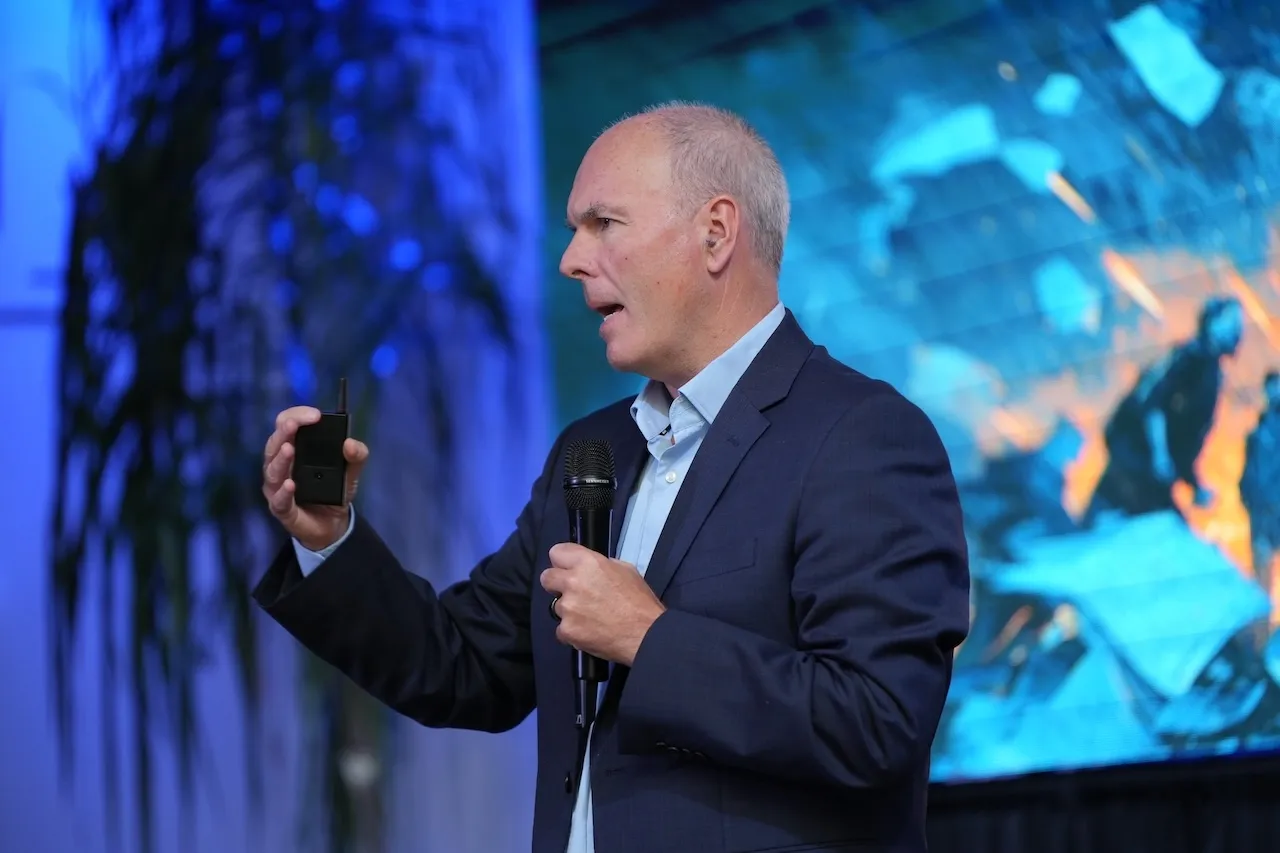As enterprises evolve from deploying individual agents to building interconnected agentic AI systems, the challenge shifts from building AI agents to coordinating them effectively.
Choosing the right orchestration pattern is one of the most important architectural decisions in designing a multi-agent AI system. A well-designed orchestration strategy turns a collection of intelligent agents into a high-performing multi-agent AI architecture that can scale and operate with enterprise-grade reliability.
Why does orchestration matter?
The orchestration pattern defines how agents interact, share context, and collaborate to complete complex tasks. The choice directly affects four fundamental dimensions of enterprise AI performance:
- Token consumption and cost efficiency: Different patterns vary widely in token usage, sometimes by more than 200%, depending on the number of reasoning iterations and coordination layers required.
- Latency and user experience: Centralized control structures can add milliseconds or seconds of delay-particularly important for voice and real-time systems where responsiveness is essential.
- Development velocity versus control: Each pattern represents a trade-off between configuration simplicity and the degree of programmatic control available to developers.
- Scalability and maintenance: The orchestration structure determines operational overhead, total cost of ownership, and how systems behave under high load.
Types of Orchestration Patterns
Kore.ai provides three distinct orchestration patterns that enable enterprises to balance control, scalability, and speed of innovations:
- Supervisor pattern – centralized command and control
- Adaptive agent network pattern – decentralized collaboration
- Custom pattern – programmatic flexibility and control
Each pattern addresses the diverse needs and technical maturity of an organization. The following sections explain how they function in practice, along with guidance on when to use them and when to avoid them.
Supervisor pattern: centralized command and control
The Supervisor pattern employs a hierarchical architecture in which a central orchestrator coordinates all multi agent interactions. The orchestrator receives the user request, decomposes it into subtasks, delegates work to specialized agents, monitors progress, validates outputs, and synthesizes a final unified response.

This pattern is best suited for complex, multi domain workflows where reasoning transparency, quality assurance, and traceability are more critical than real-time responsiveness.
Example: loan payoff in enterprise banking
Consider a customer interacting with a banking assistant who says,
“Pay off my car loan using my savings account.”
While the request appears simple, it involves multiple backend systems, sequential dependencies, and compliance checks. The supervisor orchestrates the process as follows:
- The orchestrator receives the user input and parses its components:
- Action: pay off loan
- Source: savings account
- Target: car loan
- Action: pay off loan
- It maps the workflow into four key actions:
(a) retrieve loan payoff quote → (b) verify available funds → (c) execute transfer → (d) generate confirmation. - The orchestrator identifies three specialized agents for the job:
- Loan Agent – retrieves payoff amount, accrued interest, and penalties.
- Transaction Manager – verifies balance, daily limits, and fraud thresholds.
- Payment Processor – executes the transfer and confirms settlement.
- Loan Agent – retrieves payoff amount, accrued interest, and penalties.
- The orchestrator provides each agent with only the data necessary to complete its task securely:
- The Loan Agent receives masked loan details and customer attributes to calculate the total payoff.
- The Transaction Manager accesses balance and policy thresholds but not loan data.
- The Payment Processor receives tokenized identifiers and transfer details without exposure to sensitive PII.
- The Loan Agent receives masked loan details and customer attributes to calculate the total payoff.
This ensures minimal data exposure while maintaining continuity.
- The Loan Agent and Transaction Manager operate in parallel - retrieving payoff data and verifying funds simultaneously. Once both return results, the orchestrator initiates the Payment Processor.
- The orchestrator validates that:
- The payoff amount matches available funds.
- The transaction complies with internal policies.
- The payoff quote remains valid.
- The payoff amount matches available funds.
- If inconsistencies arise, it replans - for example, requesting an alternative account or refreshing data.
- The orchestrator aggregates all outputs into a single, validated response:
“Your car loan payoff of ₹X has been processed. Transaction ID: 12345. Settlement expected within 24 hours.”
The reasoning trace and transaction details are logged for compliance and audit purposes.
This multi agent system example demonstrates how the Supervisor pattern enables transparent, iterative coordination across multiple specialized agents while maintaining centralized control and auditability.
When to use supervisor pattern
- Multi domain enterprise workflows requiring central oversight and explainability.
- Employee copilots or digital assistants that need visible reasoning and traceable outputs.
- Text-based or asynchronous applications where minor latency is acceptable.
When to avoid supervisor pattern
- Real-time or voice systems, where centralized reasoning increases latency.
- High-scale agent environments that could overload the orchestrator.
- Scenarios with strict token budgets or cost constraints.
Adaptive agent network pattern: decentralized collaboration
The adaptive agent network pattern eliminates centralized control, enabling agents to collaborate and transfer tasks directly based on expertise and context. Each agent can determine whether to execute, delegate, or enrich the task before passing it forward.

This pattern is optimized for low-latency, high-interactivity environments such as conversational assistants, customer support systems, and real-time voice interfaces.
Example: employee payroll assistance workflow
An enterprise employee reaches out to an internal AI assistant and says:
“I can’t access my payslip.”
In this scenario, agents interact autonomously without an orchestrator mediating each step.
- The Welcome Agent receives the message, performs intent classification, and determines that the request may relate to either system access or payroll data.
- The Welcome Agent routes the task to the IT Assistant, sharing structured context:
- Employee ID (masked)
- Channel of interaction (Teams or intranet)
- Error message or HTTP code
- Session metadata
- Employee ID (masked)
- The IT Assistant uses this data to continue the conversation seamlessly, avoiding redundant questions.
- The IT Assistant investigates logs and finds that authentication is successful, but synchronization with the payroll database has failed - indicating the issue lies in the finance system.
- The IT Assistant transfers the enriched context to the Finance Assistant, providing:
- Investigation summary
- Detected system of failure
- Masked identifiers for the relevant payroll record
- Investigation summary
- The Finance Assistant resumes directly, without re-prompting the employee.
- The Finance Assistant regenerates the payslip, syncs the payroll record, and confirms that the issue is resolved.
It either responds directly or hands the message back to the Welcome Agent for delivery:
“Your payslip access issue has been resolved. The document is now available on the HR portal.”
Throughout this flow, agents exchange tasks fluidly while maintaining context integrity, ensuring a smooth user experience without central coordination overhead.
When to use
- Real-time applications where responsiveness and conversational continuity are critical.
- Dynamic routing across specialized domains such as HR, IT, or finance.
- Performance-optimized multi agent system architectures where distributed processing improves scalability.
When to avoid
- Workflows that require parallel or synchronous coordination.
- Environments where traceability and debugging are paramount.
- Scenarios with ambiguous task ownership or overlapping capabilities.
Custom pattern: programmatic flexibility and control
The custom pattern provides enterprises with full programmatic control over orchestration. Using the Kore.ai Agent SDK, developers can design orchestration logic, agent relationships, and execution rules tailored to their organization’s compliance, performance, and integration needs.
This pattern is ideal for highly regulated industries or advanced AI engineering teams that require deterministic control and deep system integration.
Example: regulatory risk review in financial services
A global bank implements an automated loan risk review workflow that must comply with internal and external regulatory frameworks.
Off-the-shelf orchestration patterns cannot enforce the institution’s proprietary models and audit requirements, so developers implement a custom orchestration pipeline using the Kore.ai SDK.
- Developers define specialized agents and their dependencies in code:
- Data Retrieval Agent – collects customer and loan data from internal systems.
- Risk Analysis Agent – applies proprietary risk models.
- Compliance Agent – validates outcomes against jurisdictional and audit rules.
- Report Generator Agent – compiles the final, certified report.
- Data Retrieval Agent – collects customer and loan data from internal systems.
- Developers design a shared context object carrying only essential metadata:
- Loan identifiers, jurisdiction, and audit references.
- Model parameters and compliance tags.
- Execution timestamps for full traceability.
- Loan identifiers, jurisdiction, and audit references.
- All sensitive data is masked or tokenized per organizational policy.
- The orchestration logic dynamically routes between agents:
- If the Risk Analysis Agent flags high exposure, the controller triggers a Manual Review Agent for secondary assessment.
- Otherwise, it proceeds to Compliance Agent for validation.
- Failures or timeouts are handled programmatically through error-catching routines.
- If the Risk Analysis Agent flags high exposure, the controller triggers a Manual Review Agent for secondary assessment.
- The Risk Analysis and Compliance agents can execute in parallel once the data retrieval completes. Synchronization points ensure all results are received and validated before final aggregation.
- The Report Generator Agent compiles a signed, versioned report including:
- Risk score, compliance validation results, and reasoning summary.
- Complete audit log and regulatory references.
The output is securely stored and automatically transmitted to the regulatory reporting system.
- Risk score, compliance validation results, and reasoning summary.
All agents operate within Kore.ai’s managed, sandboxed environment, enforcing encryption, RBAC, and least-privilege access. The orchestration logic itself is version-controlled, logged, and monitored for compliance audits.
This multi agent system example highlights how the Custom pattern combines enterprise-grade security and scalability with full programmatic flexibility - empowering organizations to operationalize unique, high-stakes business logic under complete control.
When to use custom pattern
- Regulated or high-risk environments (finance, healthcare, insurance).
- Complex orchestration requiring custom logic or external system integration.
- Migration projects where proprietary frameworks must coexist with Kore.ai infrastructure.
When to avoid custom pattern
- Rapid prototypes or standard automation where simpler orchestration suffices.
- Teams lacking specialized AI engineering or DevOps capabilities.
- Use cases prioritizing speed, cost, or low maintenance.
Implementation recommendations
Selecting the right orchestration pattern depends on your organization’s goals, technical maturity, and operational priorities. The core principle is to choose the simplest pattern that effectively meets your business requirements.
Most enterprise implementations achieve optimal results using the Supervisor or Adaptive Network patterns, reserving the Custom pattern for workflows demanding full programmatic control.

Recommended approach
- Start with configuration-based patterns. Use supervisor or adaptive agent network patterns for faster implementation, lower cost, and simplified maintenance.
- Advance to custom orchestration only when necessary. Adopt the custom pattern when existing patterns cannot meet regulatory, integration, or performance needs.
- Design for clarity and traceability. Maintain structured logging, context preservation, and transparent reasoning across all patterns.
- Align with organizational maturity. Match the orchestration complexity to available AI expertise, operational processes, and infrastructure readiness.
Conclusion
Each orchestration pattern represents a distinct balance between control, performance, and flexibility:
- The Supervisor pattern provides centralized reasoning and transparency.
- The Adaptive network delivers distributed efficiency and real-time responsiveness.
- The Custom pattern enables complete control and compliance-grade orchestration for specialized use cases.
By offering all three orchestration patterns within a unified platform, Kore.ai empowers enterprises to design, deploy, and scale multi agent systems that align precisely with their operational requirements, technical maturity, and long-term AI strategy.
Talk to an expert to identify the orchestration pattern that best fits your use case.
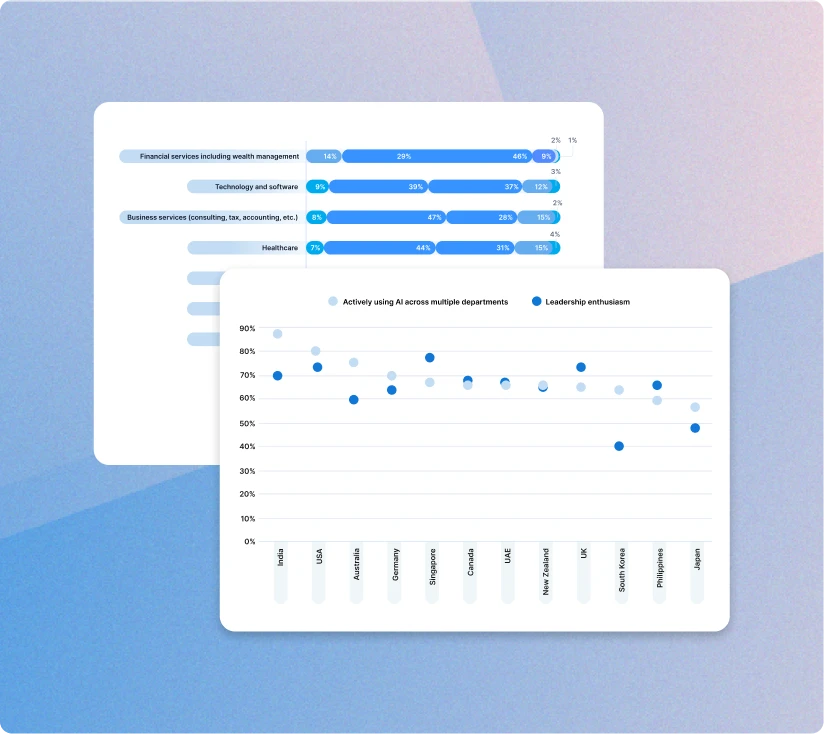


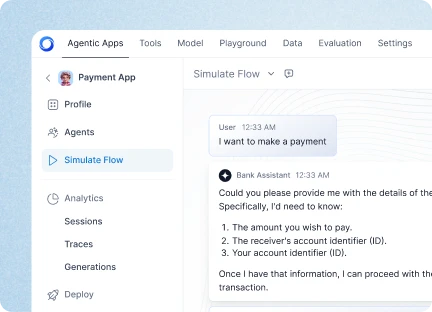

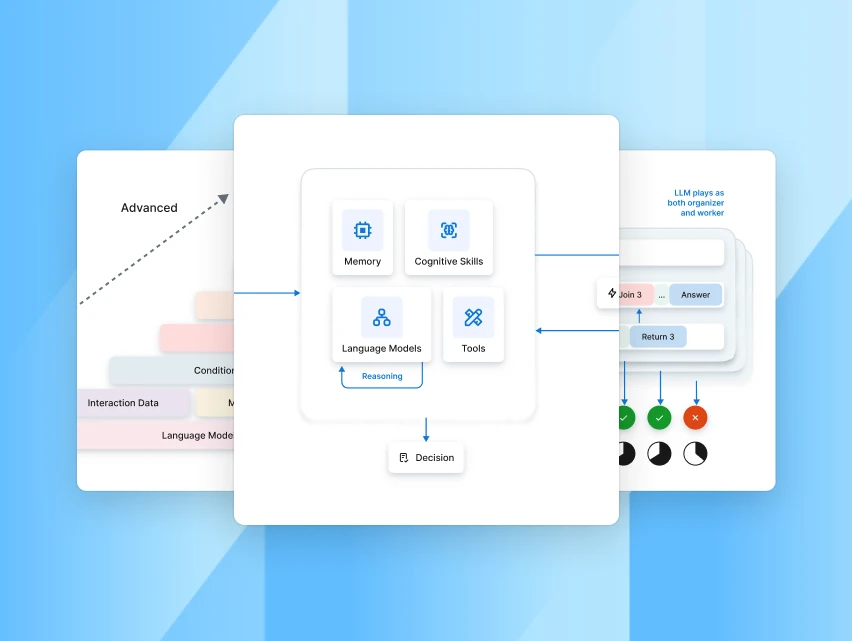

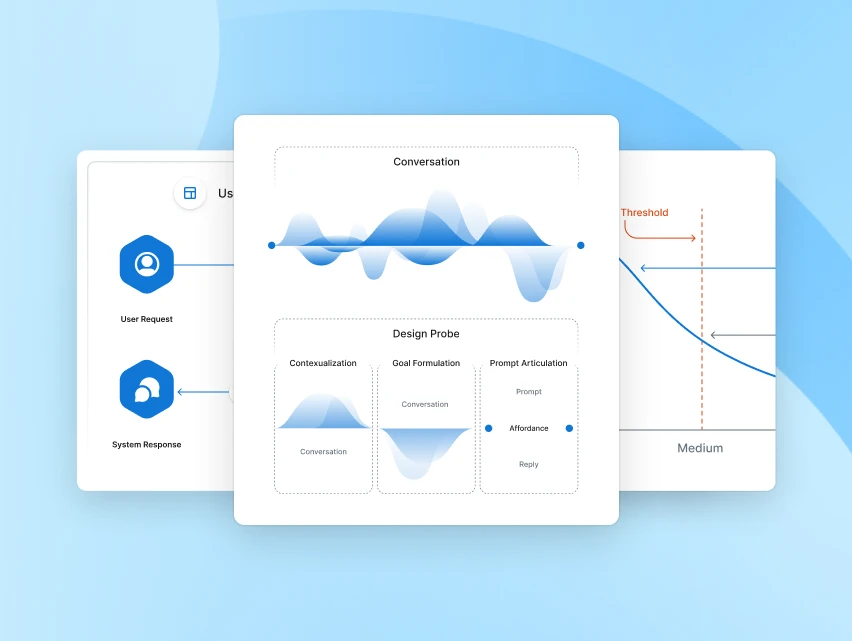
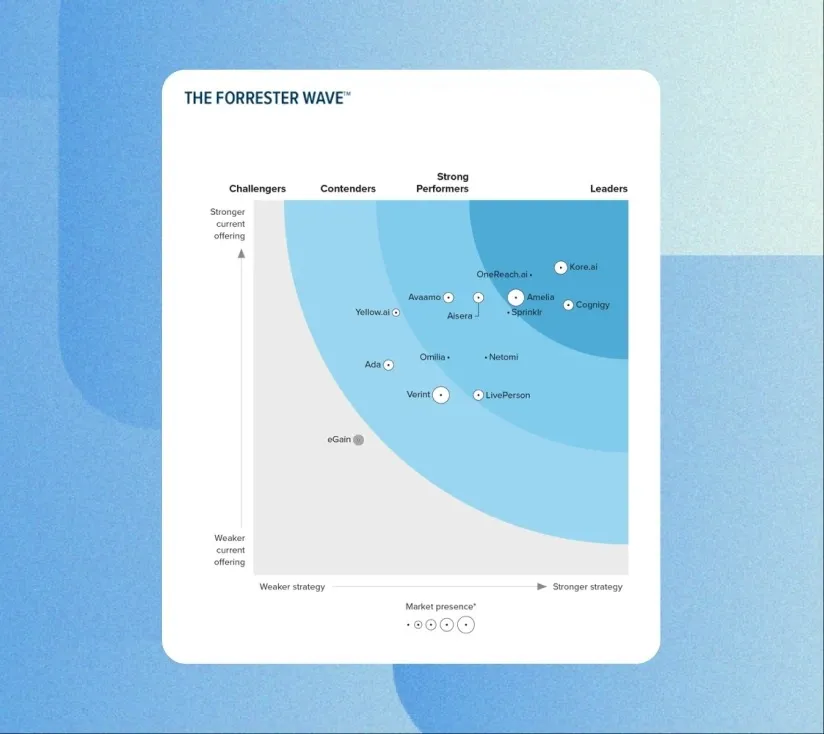


.webp)





